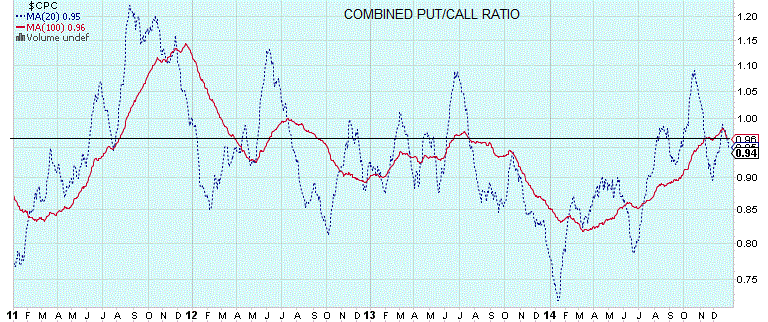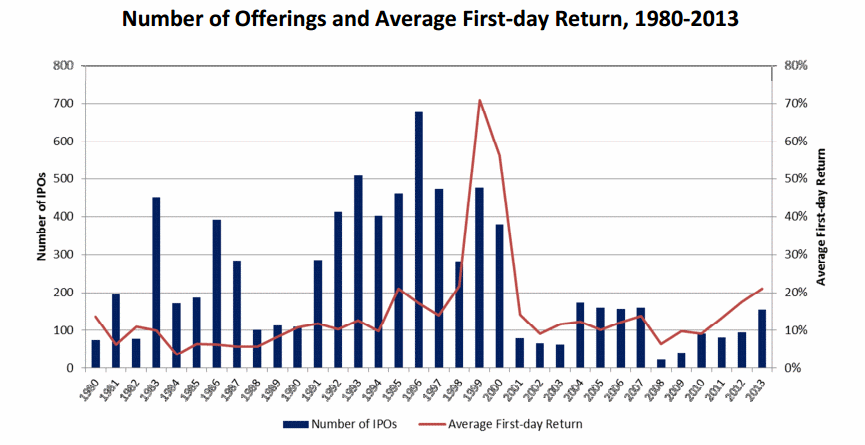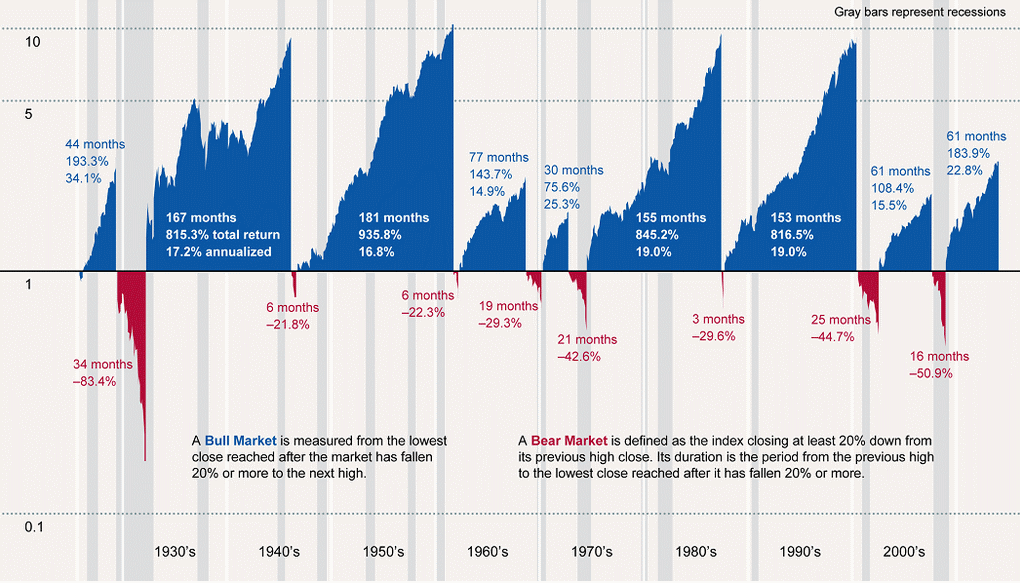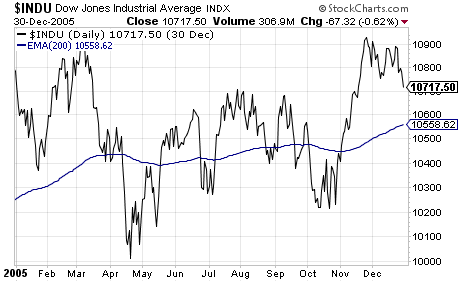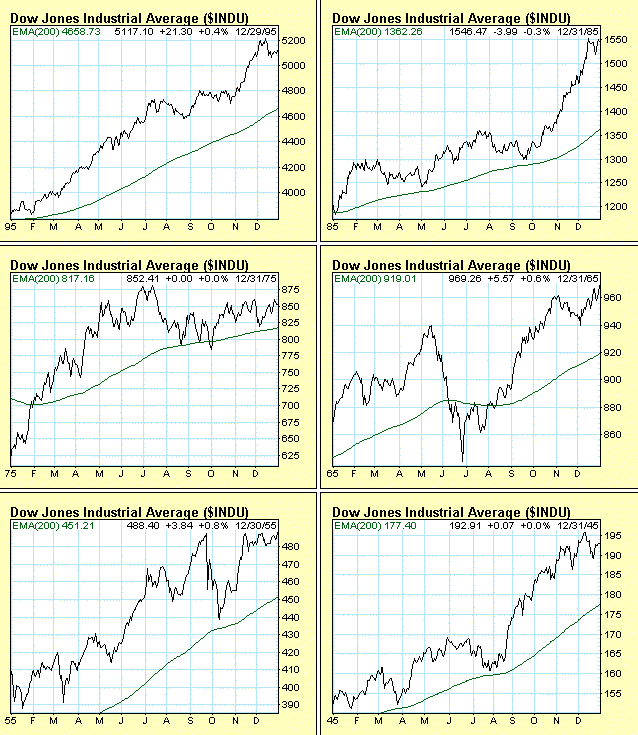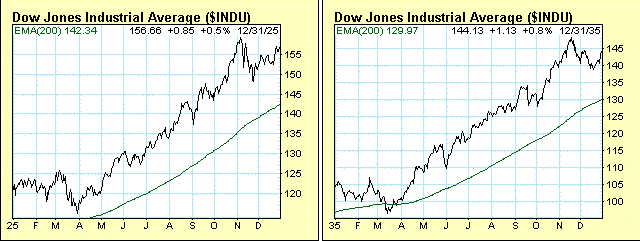What follows is a portion from the monthly client letter I send out to investors.
A Marathon, Not a Sprint
In the spirit of welcoming the new year with a sense of forthrightness that seems to be lacking on Wall Street, I found the second half of 2014 to be agonizing. Perhaps my agony stems from the fact that I was caught in the malaise that was small-cap trading during this period. Or maybe it lies in the fact that the major benchmarks just kept going up while I couldn't figure out which names were driving the market forward. In any case, the narrow market of 2014 left all but a chosen few scratching their heads wondering out loud, “what can I do to keep up?”
Although yearly performance is an important statistic that I take pride in, all investors are prone to forget the fact that this is marathon, not a sprint. There is no strategy that can be asked to outperform under all market conditions. Within any strategy there are times that a digestion period takes place. The investments within a portfolio don't know or pay attention to the same calendar you and I do. They are driven by events, both macro and micro, that are sometimes immediately reflected in the stock price and other times take many months to be realized. In either case, patience is the determining factor as to who ends up successful and who ends up in misery.
The Antithesis of Euphoria
Why exactly were small-cap companies such underperformers in 2014? The broad stroke version of the answer lies in the fact that small-cap names required a break. They had been moving at breakneck speeds over the past few years, with double digit up years every year since the 2009 bottom with the exception of 2011. In fact, the preceding year (2013) was the strongest year of all with a gain of near 40% for the Russell. So it turns out to be a well deserved break, in fact.
The most pressing question, at this point, is how can a market be in any type of euphoric stage when entire swaths of speculative sectors, whether small-cap or otherwise, are left for dead in the midst of a narrow advance? If anything, this reveals a market that is timid in nature, as a small group of well heeled, sophisticated investors bid up companies that are well-researched, extremely liquid and fairly reliable with respect to earnings.
This is the antithesis of euphoria as it demonstrates responsibility in the face of increasingly frequent record highs in major indices. Euphoric markets are characterized by irresponsible investment decisions carried out by misinformed, speculative investors with unrealistic expectations. The market of 2014 has been anything but.
What is happening is that the string of record highs in the major indices is causing both professional and retail investors to form a blanket judgment that this type of advance is unsustainable simply because of its persistence or if you will, simply because it exists. There is nothing to substantiate the unsustainable nature of the current move except for random valuation metrics and nonsensical macro correlaries. A majority of the analysis taking place is, in fact, curve fitted around the feeling that the markets have gone up too much and must at some point fall substantially. An attitude undoubtedly born from the decade long cycle of busts that we experienced between 2000-2010.
While there is no science to picking tops within a secular cycle, if you were to observe any of the major tops in history of equities, real estate or commodities you will undoubtedly find one commonality irrespective of the asset class: Emotion. The enveloping of psychology in a blanket of singularly focused optimistic expectations has been prevalent at every important top. This is, of course, accompanied by the necessary rise of speculative involvement from individuals who are seeking unreasonable returns in a short period of time through uninitiated methods that only seem viable because of the euphoric environment itself.
In this regard, the market of 2014 has not seen nearly the level of optimistic involvement from either retail or institutional investor to warrant concern of any imminent long-term disruption in the secular trend.
The chart of the ending level of the combined put/call ratio puts this lack of general optimism in the face of consistent record highs into brilliant perspective:
First, notice that we had the highest ending level put/call ratio to close out 2014 since the end of 2011.
Secondly, for the first time since 2011, put buying as a whole steadily increased throughout 2014 as demonstrated by a steadily increasing 100 day moving average in the chart below.
The 90s Are Back: A Market Led By Developed Economies
I have mentioned that in the current decade we are reliving the 90s in a more advanced form. A decade of post-recessionary, low interest rate, developed economy led growth that is spearheaded by emerging technology while commodities flail. I will present one data point that is perhaps the most significant: 1990-2000 was the last time we saw a global economy that was led by developed markets. From 2000-2011, the focus began steadily shifting to commodity led emerging economies that were being anchored by hyper-growth in the BRIC countries.
Very simply, once the dynamic of emerging vs. developed economies does a complete 180, as it has, so will everything else that substantiated that previous environment. We are now in a global economy that is being led by the developed world. This means, for example, that crude oil prices are no longer a factor in determining economic growth. This means that a strong dollar is no longer a drag on earnings that will cause markets to writhe in pain. This means that gold doesn't matter...at all. This means that the U.S. markets are the leading indicator for the rest of the developed world. This means that growth within technology and financials is the key to growth in the overall economy. This means that a consumer led economy leads to easier credit, rising home prices and a steadily declining jobless rate. Everything an investor knew and understood from 2000-2010 should be summarily erased from their memory banks and be replaced with the tendencies and characteristics of the equity markets and economy from the 90s.
This also goes for the pace of gains to be expected from the equity markets. During the entirety of the 90s, the S&P 500 gained over 300% while experiencing only two negative years. The second half of the decade was far stronger than the first half. The second half of the decade also saw significant retail involvement while the first half saw the markets largely ignored by the retail investor.
The involvement of the retail investor in both individual stocks and mutual funds becomes evident when you look at the number of IPOs issued during the second half of the 90s. Here is the breakdown from 1995-1999:
1995: 458 IPOs issued
1996: 675 IPOs issued
1997: 474 IPOs issued
1998: 284 IPOs issued
1999: 477 IPOs issued
This is an important point because already in 2014 we saw numerous pundits attempting to distract investors into a bearish footing by pointing out that 2014 saw the most number of IPOs issued since 2000. In fact, 2014 saw nearly 400 IPOs issued. The statistic, however, is useless for attempting to determine whether or not a euphoria of any form is taking place. In fact, if you are to look at the IPO data over the past several years, the current decade is dwarfing the 90s in terms of IPOs issued signaling that (1) demand isn't there for new issues (2) investment banks are being fairly selective in what they choose to bring to market because they know that the speculative dollars necessary to absorb supply of rubbish doesn't exist.
The chart below shows the vast contrast in IPO issuance between the decade of the 90s and the decade that we are in at present:
Source: Jay R. Ritter – University of Florida
While IPO demand has just started allowing for an increased number of IPOs, this can go on for years before any sustainable market top is observed.
Due to the detritus that will coming down the chute aimed squarely at the minds of investors pertaining to a rising Fed Funds rate in 2015, it is also important to touch on the reality of a tighter monetary policy again using the 90s as our guide.
In February of 1994, the Fed started raising rates, with a 300bp increase taking place up until March of 1995. In 1995 the S&P was up 34%. In fact, the Fed raised the Fed Funds rate numerous times throughout the second half of the 90s, which the markets greeted by sustaining one of the largest rallies in U.S. history.
The media cycle will be increasingly focused on the negative ramifications of choking off liquidity to a market that has been born and bred on liquidity over the past several years. This is a false narrative of epic proportions meant to intimidate the naïve and uninitiated investors among us. There is no correlation between the Fed raising rates and the markets topping out. Markets inherently seek tops on emotion, not fundamental valuations or events. In other words, there is no bell that rings for investors to signal a top, which is effectively what correlating a tighter Fed policy to a market top implies.
A Mutant Bull Market
The age and virility of the current bull market can be succinctly understood simply by looking at bull markets of the past. More concisely, the time span of those bull markets following a bear market of some consequence.
Never mind the fact that in the most recent bear market ending in 2009, we saw the steepest decline since the Great Depression. And never mind the fact that in the bear market that preceded ending in 2003, we saw the second steepest decline since the Great Depression. A veritable rapid fire decade of crisis events unlike we have experienced in the modern market era.
The point here being that simple adherence to proportionality in the markets dictates that the current advance could very well indeed be more significant than bull markets of the past in both duration and the level of returns. In other words, the snap back from experiencing two nearly back to back bubbles imploding will be substantial in nature, as the strength of the current market seems to be suggesting to a studio audience of the mostly deaf and blind.
The chart below puts into perspective bull markets of normal and abnormal (normal being less than 100 months in duration and gaining less than 200%) circumstance. It is my opinion, that this current bull market is one of abnormal circumstance. A mutant, if you will:
A History of Bull Markets
Source: Morningstar
The Outcome For 2015
There are a number of factors working in the favor of the bull market continuing in 2015. One of the most notable phenomenons that will undoubtedly be getting attention in the weeks ahead is the mid-decennial pattern. Years ending in “5” have had a remarkable ability to produce gains for investors. In the past 11 years ending in 5 going back to 1905, the market has been up every single time, averaging a gain of 30%.
Here is a look at every year ending in 5 going back to 1925 for the Dow starting with 2005:
Years Ending In “5” For The Dow
What this market has proven to investors time and again since its inception is that simply knowing that the market is going to move up does not give an investor the keys to the kingdom. There have been rotational aspects evident that do not seem to be interested in abating at this point in time. The rotational nature of the markets has been a symptom of a lack of abundant capital that has the ability to uniformly enhance the bull market irrespective of sector. It is also evidence of the diligent nature of the current investment community that has consistently been able to separate responsible investment action from irresponsible.
In 2015, this rotational element will likely resolve itself in the ability to create “easy alpha.” Two areas of note have the most potential based on present and past data:
1. Small-cap stocks as judged by the Russell 2000, ended 2014 positive to the tune of 3% while the S&P rose more than 11%. This is highly unusual behavior for the markets as small-caps typically feature a prominent role in the advance.
As noted in the October client letter, periods of disinterest in the Russell are typically met by strength in the year to follow.
Additionally, I expect that small companies will take a prominent role in the advance matching or exceeding gains for the S&P 500 in the year ahead.
2. There has been notable outperformance in what I would define as “old school” large cap technology. MSFT, as an example, was positive to the tune of 24% in 2014. ORCL managed to gain 18%. INTC gained 38% in 2014.
These are the largest gains for this complex of “old school” technology names in over a decade. The potential for returns in these names will come to be viewed by the diligent investor class that currently occupies the equity markets as much less prone to unnecessary and unpredictable shifts in earnings, as well as much better priced on a value basis versus their “new school” technology competitors.
As a result, I expect significant outperformance to take place in the old school tech complex versus names like FB, GOOG and TSLA. The markets being as generous as they are in their present state will not allow the aforementioned names to decline by any significant percentage. In fact, there is a good possibility they will advance in the year ahead. However, the gains in the names of technology companies from booms of the past offer more significant opportunities for overall risk-adjusted returns moving forward.
"Lessons Learned In 2014" & "In Closing" sections were omitted. The full version of Client Letter with performance, position information etc. is available via email to those who choose to be on the monthly list. If you would like to be added to the list, please email me at mail@t11capital.com
Regards,
Ali Meshkati

